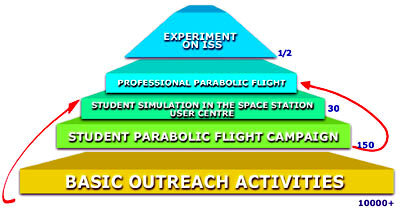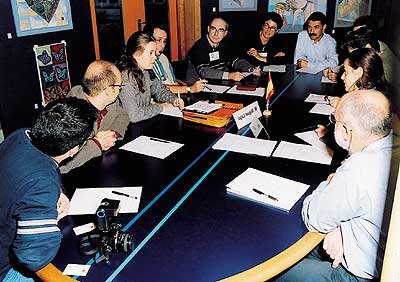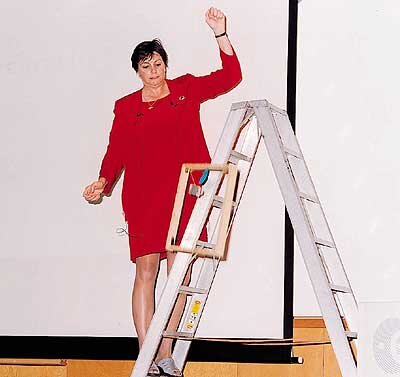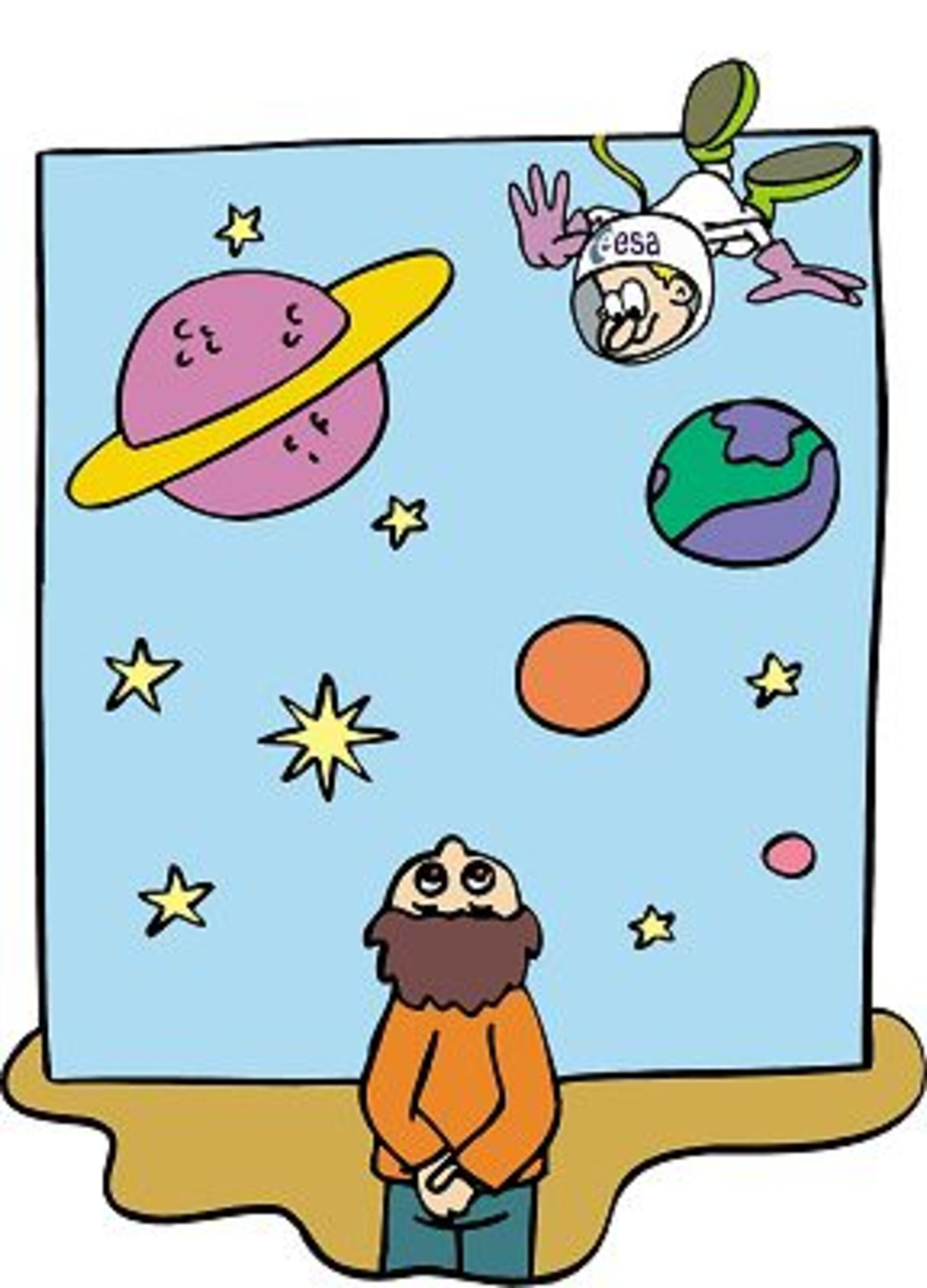A response to TEACH SPACE 2001
From 26 to 28 October 2001, the European Space Agency (ESA) was host to approximately 160 teachers at the European Space Research and Technology Centre (ESTEC) in Noordwijk, The Netherlands. The occasion was TEACH SPACE 2001, the first International Space Station Education Conference in Europe.
Teachers from 20 different countries, including all 15 ESA Member States [*], as well as the Czech Republic, Hungary, Russia, Canada and the United States, participated in this three-day event. A wealth of information was gathered representing the wide variety of nationalities present, as well as the different subjects and education levels taught.
Space as a theme in education

We, at the European Space Agency (ESA), are realizing more and more the importance of space as a theme in education. ESA depends on a highly talented and skilled workforce both now and in the future. As an agency we are aware that this workforce potentially lies in today’s classrooms. We believe space as a theme has many fascinating angles, which can be applied to subjects taught at primary and secondary levels. These angles can give students that extra stimulus to actively participate and be fascinated in their subjects.
Educational programmes
The International Space Station (ISS) in particular represents an ideal tool for teaching science, maths, technology, engineering and many other disciplines. It is for this reason that ESA – in the framework of the International Space Station Programme - has launched two educational programmes:
1. The ISS Education Programme
This programme addresses European students aged 18 - 27 years old. It makes use of the ground facilities and services of the International Space Station, allowing 13 kg of experiments each year to fly on board the European Columbus Laboratory.

This Programme can best be represented by a pyramid structure where the activities undertaken are initially addressed to tens of thousands of students, of which only a small number will end up with having access to experimentation on board the ISS.
2. The ISS Education Initiative
This initiative focuses on pre-university students (aged 6-18), and was launched at TEACH SPACE 2001.
TEACH SPACE 2001: teacher requirements
TEACH SPACE 2001 was organised to stimulate teachers to adopt space as a tool for teaching, and for teachers to encourage ESA to take a more active role towards education.
The busy conference programme included introductions to several ESA departments, such as Life Sciences and Space Exploration, as well as a number of introductions to the largest, peaceful cooperation project - the International Space Station.

Through workshops and questionnaires, teachers were asked about their country’s specific educational requirements, as well as their needs in incorporating space into their specific subject. ESA is currently studying this information to better understand the education systems throughout Europe, in turn helping to create material that can be widely used.
Some conclusions from TEACH SPACE 2001 are:
European teachers in all disciplines are enthusiastic and eager to use space as a teaching tool
Curricula are in general not flexible: space can only be taught as an optional course or as a supporting element to existing curricula
Schools/teachers have no access to funding
ESA needs to focus on European material
The formal education structures/organizations (Ministries of Education, local education authorities etc…) need to be improved: a network must be established between teachers and schools, supported by a selection of publications and input from other organizations (such as planetariums, museums etc…)
Teachers need simple, practical, modular, European material that can be applied to their lessons
- ESA needs a pool of teachers/consultants to adapt material for schools
2002: Focus on education

During 2001, Human Spaceflight education activities have focused on gathering input from teachers rather than on producing educational material. This was a necessary first step. To maintain the momentum gained and the interest of teachers, it is recommended that during 2002 the education effort be increased, shifting the focus to the production of educational material.
Specific projects by teachers, for teachers, form the basis of ESA’s first publication, the conference proceedings. Teachers, space enthusiasts and companies responded to an Open Call for space project proposals. Over 40 projects were received, and after careful consideration ten projects were selected for presentation at the event.
Pilot project
In 2002 ESA’s Directorate of Human Spaceflight aims to define a pilot project on the basis of teachers’ input at TEACH SPACE 2001.
To achieve this aim, the Directorate will,
- Plan for a bi-annual TEACH SPACE conference;
- Focus on ISS related education projects, in particular;
- Define a pilot project on the basis of teachers’ input at TEACH SPACE 2001;
- Pursue collaboration with publishers;
- Pursue potential collaboration with UNESCO and other educational organisations;
We hope to create ESA Human Spaceflight educational material in the near future with teachers’ input and are looking forward to any further comments you may have.
Keep checking our website for news and details on upcoming (educational) events.
[*] The 15 ESA Member States are: Austria, Belgium, Denmark, Finland, France, Germany, Ireland, Italy, Norway, The Netherlands, Portugal, Spain, Sweden, Switzerland and United Kingdom.


